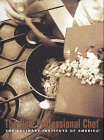
How the Cooks Prepared SOS
By Steve Karoly
I recently asked two retired military cooks how they made SOS. Both cooks served in the American military from the middle of the Korean War until the end of the Vietnam War after twenty-plus years of service.
What’s interesting are the differences between the likes and dislikes of the two services. Each service kept their favorites until the Armed Forces Recipe Service was published in February 1969. After 1969, service cooks were exposed to the favorite recipes of the other services. Creamed beef, which was originally an Army favorite, has become the most popular version of SOS.
Chipped beef
Both remember cooking chipped dried beef on toast early in their careers. Norman Ballin, a retired Army sergeant first class, said that chipped beef was more favored by the "old brown shoe Army." The young soldiers were unanimous is their dislike for chipped beef, according to Ballin.
Chipped beef, which is made from dried, salted beef that has been sliced or chipped into small pieces, entered the Army’s recipe database with publication of the 1910 revision of the Manual for Army Cooks. The earliest versions called for six quarts of beef stock and two cans of evaporated milk. After being thickened with a roux of flour browned in butter, the sauce was seasoned with chopped parsley and ground black pepper. The cook added beef just before serving to keep the dish from getting too salty.
This recipe remained unchanged as the Army prepared for World War II. But by the publication of TM 10-412 in August 1944, the parsley and beef stock had been removed in favor of a creamier chipped beef. In this and recipes published in later editions of the TM, the cook simply made a light to medium cream sauce and added chipped beef and seasoned it with black pepper.
But there was one key instruction missing from the early recipes. The cook had to soak the dried beef in water overnight to leach out its excessive salt content. Ballin emphasized this point during our conversation. And since a conservation minded cook may have been tempted to use the salted water to make the cream sauce, Ballin said you had to discard the water in the morning.
Although I have not seen any Navy cookbooks published prior to 1940, I suspect the recipe crept into the Navy’s recipe file early in the century as well. After all, the Navy was known for filling ship’s storerooms with oak casks of salt beef and salt pork.
Minced beef in the Navy
According to Tom Selland, a chief commissaryman who retired from the Navy in June 1975, his ship only served chipped beef one time each year. Otherwise, said Selland, "The crew went up in arms." Minced beef on toast was the SOS of choice for sailors.
"Minced beef was highly acceptable," said Selland. "They liked it a lot better than spinach quiche." As you may guess, Selland said this with a smile on his face. To paraphrase a popular cliché from the 1970s: Real sailors didn’t eat quiche in those days.
Minced beef is uniquely Navy. It is in every Navy cookbook until the inception of the AFRS. In fact, the recipe for creamed beef doesn’t appear in any Navy cookbook between 1940 and 1962. Like chipped beef, I suspect it also appears in the 1927 and 1932 versions of the Cook Book of the United States Navy.
Minced beef is prepared by adding ground beef to a tomato sauce, according to Selland. It’s cooked much like Army cooks prepared creamed beef. But it’s the of mace or nutmeg that made minced beef unique.
According the Navy’s 1962 recipe, the commissaryman braised ground beef and chopped onions in a copper -- that’s what commissarymen have called steam-jacketed kettles since the day’s of sail. He then added flour to the meat and cooked the mixture until it browned. (Commissarymen stirred the meat mixture with large flat paddles called copper paddles.) He finished the dish by adding water, nutmeg or mace, salt and ground black pepper. Like chipped beef or creamed beef, minced beef was served over toast points.
Selland learned to cook minced beef on his first ship, the USS Polaris (AF 11), as a seaman and commissaryman third class. He said that the chief commissaryman on the Polaris -- he couldn’t remember his name -- taught the cooks to thicken the tomato sauce for the minced beef with cornstarch. Instead of adding flour to the beef as it braised in the copper, the commissarymen on the Polaris added tomatoes, water, nutmeg or mace, salt and pepper to the copper. They thickened it with a cornstarch slurry. Selland continued to use this recipe throughout his career.
Minced beef appeared on the Polaris’ menu about every other week, said Selland. The Polaris served corned beef hash and hard boiled eggs to the crew on the alternating week. Selland said that the Polaris served a lot of bacon, ham and sausage during the remainder of the week.
Griddle eggs were cooked to order every day of the week except on Saturdays and on boiled egg day. According to Selland, the crew could order their eggs any way they desired as long as fried eggs were on the menu. Eggs were cooked hard, over easy, over medium, sunny side up and scrambled. The only style a sailor on the Polaris couldn’t order was omelets.
Creamed beef in the Army
Creamed beef became more popular in the Army sometime in the 1960, according to Ballin. Unlike a lot of cooks from his Army service, Ballin preferred to only season his creamed beef with salt and pepper. A lot of cooks used onions, garlic powder, beef base and Worcestershire sauce, said Ballin. The best creamed beef allowed the meat and dairy flavors blend, instead of being overpowered by garlic and Worcestershire.
The 1942 and 1950 creamed beef recipes call for ground beef, flour, beef stock, evaporated milk, salt and pepper. These early recipes, the cook braised the beef and onions first. Then in a separate pot, he made a roux and added evaporated milk and beef stock. After the sauce had thickened, the cook poured the meat over the sauce.
He may have learned his method of preparing creamed beef from his mess sergeants early in his career. The key to making good creamed beef, according to Ballin, is to use the rendered fat from the ground beef. In the classic Army recipe, the cook braised ground beef and onions in a stock pot and skimmed off any excess fat. He then added flour to the meat and stirred it until the flour cooked. Then with the meat mixture still in the pot, the cook added milk and beef stock. The flour naturally thickened the sauce.
Army cooks typically served creamed beef over toast when the unit was at its garrison post. In the field, Ballin told me he baked baking powder biscuits and served creamed beef over them. Since the cooks started to cook breakfast before sunrise, they had to work under blackout conditions. The walls of the mess tent were drawn and the cooks had to work with flashlights. This was important because, according to Ballin, "You could see a cigarette for miles."
Ballin remembers one memorable creamed beef meal that he prepared in the field. His unit, Bravo Company of the 1st Battalion of the 77th Armor Regiment, had settled in for maneuvers along the Colorado Rover near Yuka Flats, Ariz. The newly battalion participated in a series of mock battles with the 5th Mechanized Infantry Division.
Ballin arose early one morning during the exercise only to discover that the truck driver assigned to the company mess was sick. So he did what every good soldier is training to in these situations: Ballin cooked breakfast and drove the two and a half ton truck to the battlefield. Despite the long day, each time a tired tanker said "At a boy" or "Well done" to him, he smiled. The best recognition came later that from Bravo Company’s first sergeant. All Ballin said was that he was "happy about the whole thing."
Recent changes to the AFRS recipe for creamed beef
Even creamed beef isn’t immune from recent assaults on our high-fat diet. Navy menu standards now state that a healthy choice entrée must be served when a high-fat entrée like creamed beef is served. According to Senior Chief Mess Management Specialist Bob Reiher of the Navy Food Management Team at Pearl Harbor, a high-fat entrée is one that has over 15 grams of fat per serving.
Creamed beef (it’s still AFRS recipe card number L-30) now calls for very lean ground beef with less that 10 percent fat. The roux is also history. In keeping with advances in the civilian market, Army food service specialists and Navy mess management specialists can now serve creamed ground turkey to the crew. Reiher said both the beef and turkey versions are identical except for the addition o garlic powder to the turkey. (He says no garlic for me.)
Both creamed ground beef and creamed ground turkey now qualify as low-fat entrees, according to Reiher. If prepared according to the recipe, creamed beef has 11 grams of fat while creamed ground turkey comes in at 6 grams.
August 1999
| Bulletin Board | Keyword Search |
| Bookstore | Links |
| About Us | Recent Additions |

